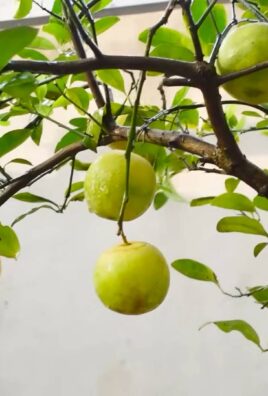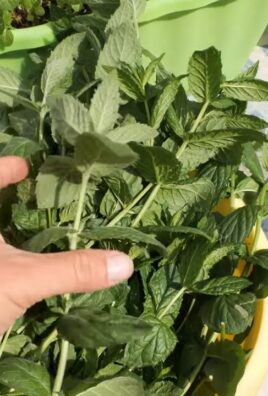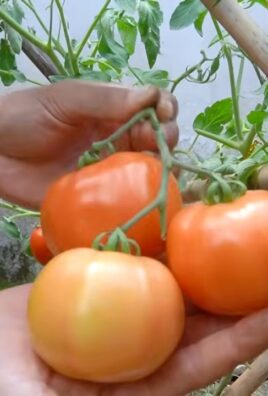Growing lemons year round might seem like a citrus dream reserved for sunny California or Florida, but I’m here to tell you it’s absolutely achievable, no matter where you live! Forget those sad, overpriced lemons at the grocery store – imagine plucking your own juicy, fragrant lemons straight from your tree, even in the dead of winter.
For centuries, citrus fruits have been prized not only for their delicious flavor but also for their medicinal properties. From ancient sailors using lemons to combat scurvy to modern-day chefs incorporating their zest into culinary masterpieces, lemons have a rich and vibrant history. But what if you could bring that history, that freshness, right to your own backyard (or even your balcony)?
That’s where these DIY tricks and hacks come in. Many people struggle with getting their lemon trees to produce consistently, especially in climates with harsh winters. They face challenges like frost damage, nutrient deficiencies, and pest infestations. This article is your comprehensive guide to overcoming those hurdles. I’ll share my tried-and-true methods for creating the perfect environment for your lemon tree, ensuring a bountiful harvest of sunshine-yellow fruit all year long. So, get ready to learn how growing lemons year round can become your reality!

Growing Lemons Year-Round: My Foolproof DIY Guide
Okay, lemon lovers, gather ’round! I’m going to let you in on my secret to having fresh, juicy lemons available all year, no matter where you live. It’s not as daunting as you might think. With a little planning and some TLC, you can enjoy the zesty goodness of homegrown lemons whenever you crave them. This guide focuses on growing lemons in containers, which is key for year-round success, especially if you live in a colder climate.
Choosing the Right Lemon Variety
First things first, you need to pick the right lemon variety. Not all lemons are created equal, and some are better suited for container growing than others. Here are my top recommendations:
* Meyer Lemon: This is my absolute favorite! Meyer lemons are known for their sweeter, less acidic flavor. They’re also more cold-hardy than other varieties, making them a great choice for those of us who experience frost. Plus, they tend to be more compact, which is perfect for container growing.
* Improved Meyer Lemon: This is a virus-free version of the Meyer lemon, ensuring a healthier and more productive tree.
* Lisbon Lemon: If you prefer a classic, tart lemon flavor, the Lisbon lemon is a solid choice. It’s a vigorous grower and produces abundant fruit.
* Eureka Lemon: Another popular variety with a classic lemon flavor. Eureka lemons are known for their nearly seedless fruit.
* Ponderosa Lemon: While technically a hybrid, Ponderosa lemons are known for their enormous size! They’re more ornamental than practical, but they’re definitely a conversation starter.
Gathering Your Supplies
Before we dive into the planting process, let’s make sure you have everything you need. Here’s a checklist of essential supplies:
* A Large Container: Choose a container that’s at least 24 inches in diameter and depth. Good drainage is crucial, so make sure the container has plenty of drainage holes. Terracotta or plastic pots work well. I personally prefer terracotta because it allows the soil to breathe better.
* High-Quality Potting Mix: Don’t use garden soil! It’s too heavy and doesn’t drain well. Instead, opt for a well-draining potting mix specifically formulated for citrus trees. You can also create your own mix by combining equal parts potting soil, perlite, and compost.
* Lemon Tree: Purchase a healthy lemon tree from a reputable nursery. Look for a tree with vibrant green leaves and a strong, well-developed root system.
* Citrus Fertilizer: Citrus trees are heavy feeders, so you’ll need a fertilizer specifically formulated for citrus. Look for one that contains micronutrients like iron, zinc, and manganese.
* Watering Can or Hose: You’ll need a reliable way to water your lemon tree.
* Pruning Shears: For trimming and shaping your tree.
* Mulch: To help retain moisture and suppress weeds. I like to use organic mulch like wood chips or straw.
* pH Meter (Optional): To monitor the soil pH. Lemon trees prefer a slightly acidic soil pH of around 6.0 to 7.0.
* Grow Lights (Optional): If you live in a region with very short days or limited sunlight, you may need to supplement with grow lights during the winter months.
Planting Your Lemon Tree
Now for the fun part! Let’s get your lemon tree planted.
1. Prepare the Container: Before you add any soil, place a layer of gravel or broken pottery at the bottom of the container to improve drainage.
2. Add Potting Mix: Fill the container about one-third full with your chosen potting mix.
3. Remove the Lemon Tree from its Nursery Pot: Gently loosen the root ball by squeezing the sides of the pot. Carefully lift the tree out of the pot, being careful not to damage the roots.
4. Inspect the Roots: Examine the roots and gently tease them apart if they’re tightly bound. This will encourage them to spread out and establish themselves in the new container.
5. Position the Tree: Place the lemon tree in the center of the container, making sure the top of the root ball is level with the soil surface.
6. Fill with Potting Mix: Fill the remaining space in the container with potting mix, gently tamping it down around the root ball.
7. Water Thoroughly: Water the newly planted lemon tree thoroughly until water drains out of the drainage holes. This will help settle the soil and hydrate the roots.
8. Add Mulch: Apply a layer of mulch around the base of the tree, keeping it a few inches away from the trunk to prevent rot.
Caring for Your Lemon Tree
Once your lemon tree is planted, it’s time to provide it with the care it needs to thrive.
1. Sunlight: Lemon trees need at least 6-8 hours of direct sunlight per day. Place your container in a sunny location, such as a south-facing patio or balcony. If you’re growing your lemon tree indoors, supplement with grow lights.
2. Watering: Water your lemon tree deeply whenever the top inch of soil feels dry to the touch. Avoid overwatering, as this can lead to root rot. During the winter months, you’ll need to water less frequently.
3. Fertilizing: Feed your lemon tree with a citrus fertilizer every 4-6 weeks during the growing season (spring and summer). Follow the instructions on the fertilizer label. Reduce or stop fertilizing during the winter months.
4. Pruning: Prune your lemon tree in late winter or early spring to remove any dead, damaged, or crossing branches. Pruning also helps to shape the tree and encourage fruit production.
5. Pest Control: Keep an eye out for common citrus pests like aphids, scale, and spider mites. If you notice any pests, treat them with an insecticidal soap or neem oil.
6. Overwintering: If you live in a region with cold winters, you’ll need to bring your lemon tree indoors before the first frost. Place it in a bright, sunny location and reduce watering. You may also need to supplement with grow lights.
7. Pollination: Lemon trees are self-pollinating, but you can improve fruit set by hand-pollinating the flowers. Use a small paintbrush to transfer pollen from one flower to another.
Troubleshooting Common Problems
Even with the best care, you may encounter some problems along the way. Here are some common issues and how to address them:
* Yellowing Leaves: This can be caused by a variety of factors, including nutrient deficiencies, overwatering, or underwatering. Check the soil pH and adjust accordingly. Make sure you’re fertilizing regularly with a citrus fertilizer. Adjust your watering schedule as needed.
* Leaf Drop: Leaf drop can be caused by stress, such as sudden changes in temperature or light. It can also be caused by overwatering or underwatering. Try to maintain consistent growing conditions and adjust your watering schedule as needed.
* Lack of Fruit: If your lemon tree isn’t producing fruit, it could be due to a lack of sunlight, improper fertilization, or insufficient pollination. Make sure your tree is getting enough sunlight and fertilize regularly with a citrus fertilizer. Hand-pollinate the flowers to improve fruit set.
* Root Rot: Root rot is caused by overwatering and poor drainage. Make sure your container has plenty of drainage holes and avoid overwatering. If you suspect root rot, repot the tree in fresh potting mix.
Harvesting Your Lemons
The moment you’ve been waiting for! Harvesting your homegrown lemons is incredibly rewarding.
1. Ripeness: Lemons are typically ready to harvest when they’re fully yellow and slightly soft to the touch. The skin should be smooth and thin.
2. Harvesting: Use pruning shears to carefully cut the lemons from the tree, leaving a small piece of stem attached.
3. Storage: Store your lemons in the refrigerator for up to several weeks.
Enjoying Your Homegrown Lemons
Now that you have a bounty of fresh lemons, it’s time to put them to good use! Here are just a few ideas:
* Lemonade: The classic!
* Lemon Bars: A tangy and delicious treat.
* Lemon Chicken: A flavorful and healthy dinner.
* Lemon Vinaigrette: A zesty salad dressing.
* Lemon Water: A refreshing and hydrating drink.
* Lemon Zest: Add a burst of flavor to cakes, cookies, and other baked goods.
Growing lemons year-round is a truly rewarding experience. With a little patience and care, you can enjoy the fresh, zesty flavor of homegrown lemons whenever you want. Happy growing!

Conclusion
So, there you have it! Mastering the art of growing lemons year-round doesn’t require a greenhouse or a move to a tropical climate. With a little ingenuity and these simple DIY tricks, you can enjoy the bright, zesty flavor of homegrown lemons whenever you desire. This isn’t just about having lemons on hand; it’s about experiencing the satisfaction of nurturing a plant and reaping the rewards of your labor. Imagine the delight of adding freshly squeezed lemon juice to your winter tea, or using the zest to brighten up a holiday dessert, all from a tree you cultivated yourself.
The beauty of this approach lies in its adaptability. Feel free to experiment with different pot sizes, soil mixtures, and even varieties of lemon trees. Meyer lemons, with their sweeter, less acidic flavor, are a popular choice for indoor growing, but don’t be afraid to try other dwarf varieties. Consider adding companion plants to your pot, such as marigolds or basil, to help deter pests and attract beneficial insects. You can also adjust the lighting based on your specific environment. If you live in a particularly dark area, a grow light can be a game-changer.
This DIY method for growing lemons year-round is a must-try for several reasons. First, it’s cost-effective. Buying lemons from the store can add up, especially if you use them frequently. Second, it’s environmentally friendly. You’re reducing your carbon footprint by growing your own food. Third, it’s incredibly rewarding. There’s nothing quite like the feeling of harvesting your own lemons. And finally, it’s a fun and engaging hobby that can bring joy to your life.
Don’t be intimidated by the prospect of growing your own lemons. Start small, be patient, and don’t be afraid to make mistakes. Every gardener learns through trial and error. The key is to observe your tree, pay attention to its needs, and adjust your approach accordingly.
We encourage you to give this DIY trick a try. Whether you’re a seasoned gardener or a complete beginner, you’ll find that growing lemons year-round is a surprisingly achievable goal. And once you’ve tasted the difference between store-bought lemons and homegrown lemons, you’ll never go back.
We’d love to hear about your experiences! Share your tips, tricks, and photos in the comments below. Let’s create a community of lemon-growing enthusiasts and help each other succeed. What variety of lemon did you choose? What challenges did you face, and how did you overcome them? Your insights could be invaluable to other readers. So, go ahead, get your hands dirty, and start growing your own lemons today! The taste of sunshine is just a few steps away.
Frequently Asked Questions (FAQ)
Q: What type of lemon tree is best for growing indoors?
A: Dwarf varieties are generally the best choice for indoor growing. Meyer lemons are particularly popular due to their sweeter flavor and tolerance of indoor conditions. Other good options include ‘Improved Meyer,’ ‘Ponderosa,’ and ‘Lisbon’ dwarf varieties. These trees are bred to stay smaller and produce fruit more readily in containers. When selecting a tree, make sure it’s grafted onto a dwarfing rootstock for optimal results.
Q: What kind of pot and soil should I use?
A: Choose a pot that is at least 12 inches in diameter and has drainage holes. Terra cotta pots are a good option because they allow the soil to breathe. As for soil, use a well-draining potting mix specifically formulated for citrus trees. A mix of potting soil, perlite, and peat moss can also work well. Avoid using garden soil, as it can become compacted and doesn’t drain well. Good drainage is crucial to prevent root rot.
Q: How much sunlight does my lemon tree need?
A: Lemon trees need at least 6-8 hours of direct sunlight per day to thrive and produce fruit. If you don’t have a sunny spot indoors, you can supplement with a grow light. Place the grow light about 12-18 inches above the tree and keep it on for 12-14 hours per day. Rotate the tree regularly to ensure that all sides receive adequate light.
Q: How often should I water my lemon tree?
A: Water your lemon tree when the top inch of soil feels dry to the touch. Water deeply until water drains out of the drainage holes. Avoid overwatering, as this can lead to root rot. During the winter months, when the tree is not actively growing, you may need to water less frequently. Check the soil moisture regularly and adjust your watering schedule accordingly.
Q: What kind of fertilizer should I use?
A: Use a citrus-specific fertilizer that contains micronutrients like iron, zinc, and manganese. Fertilize your lemon tree every 4-6 weeks during the growing season (spring and summer). Follow the instructions on the fertilizer label for the correct dosage. Avoid fertilizing during the winter months when the tree is dormant.
Q: How do I pollinate my lemon tree indoors?
A: Lemon trees are self-pollinating, but they may need a little help indoors. You can hand-pollinate your tree by using a small paintbrush to transfer pollen from one flower to another. Gently brush the pollen from the stamen (the male part of the flower) onto the pistil (the female part of the flower). Repeat this process for all of the flowers on your tree. You can also use a small fan to circulate air around the tree, which can help with pollination.
Q: What are some common pests and diseases that affect lemon trees?
A: Common pests that can affect lemon trees include aphids, spider mites, scale, and mealybugs. You can control these pests by spraying your tree with insecticidal soap or neem oil. Common diseases include root rot, citrus canker, and greasy spot. Prevent root rot by ensuring good drainage and avoiding overwatering. Citrus canker and greasy spot are fungal diseases that can be treated with a copper-based fungicide. Regularly inspect your tree for signs of pests and diseases and take action promptly.
Q: How do I prune my lemon tree?
A: Prune your lemon tree in late winter or early spring before new growth begins. Remove any dead, damaged, or crossing branches. Prune to maintain a desired shape and size. You can also prune to encourage fruit production by removing any branches that are growing inward or blocking sunlight. Use sharp, clean pruning shears to make clean cuts.
Q: My lemon tree is not producing fruit. What could be the problem?
A: There are several reasons why your lemon tree may not be producing fruit. It could be due to insufficient sunlight, improper watering, lack of fertilization, or inadequate pollination. Make sure your tree is getting at least 6-8 hours of direct sunlight per day, water it properly, fertilize it regularly, and hand-pollinate the flowers if necessary. It can also take several years for a young lemon tree to start producing fruit. Be patient and continue to provide proper care, and eventually, your tree will reward you with delicious lemons.
Q: Can I grow a lemon tree from seed?
A: While you can grow a lemon tree from seed, it’s not the recommended method. Seedlings can take many years to produce fruit, and the fruit may not be true to the parent plant. Grafted trees, on the other hand, are more likely to produce fruit sooner and the fruit will be of the desired variety. If you do choose to grow a lemon tree from seed, be prepared to wait several years for it to bear fruit.




Leave a Comment